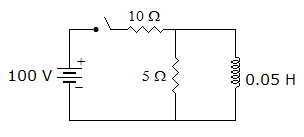Electronics and Communication Engineering - Electronic Devices and Circuits
Exercise : Electronic Devices and Circuits - Section 10
- Electronic Devices and Circuits - Section 14
- Electronic Devices and Circuits - Section 27
- Electronic Devices and Circuits - Section 26
- Electronic Devices and Circuits - Section 25
- Electronic Devices and Circuits - Section 24
- Electronic Devices and Circuits - Section 23
- Electronic Devices and Circuits - Section 22
- Electronic Devices and Circuits - Section 21
- Electronic Devices and Circuits - Section 20
- Electronic Devices and Circuits - Section 19
- Electronic Devices and Circuits - Section 18
- Electronic Devices and Circuits - Section 17
- Electronic Devices and Circuits - Section 16
- Electronic Devices and Circuits - Section 15
- Electronic Devices and Circuits - Section 1
- Electronic Devices and Circuits - Section 13
- Electronic Devices and Circuits - Section 12
- Electronic Devices and Circuits - Section 11
- Electronic Devices and Circuits - Section 10
- Electronic Devices and Circuits - Section 9
- Electronic Devices and Circuits - Section 8
- Electronic Devices and Circuits - Section 7
- Electronic Devices and Circuits - Section 6
- Electronic Devices and Circuits - Section 5
- Electronic Devices and Circuits - Section 4
- Electronic Devices and Circuits - Section 3
- Electronic Devices and Circuits - Section 2
21.
In the circuit of figure the current through 5 Ω resistance at t = 0+ is


Answer: Option
Explanation:
Current through inductance is zero. Current through 5 ohm resistance = A.
22.
In an R-L circuit excited by a battery of voltage E, the current and voltage across resistor are 1- e-t and 2(1 - e-t) respectively. If there were an initial current of 2 A in the inductance, the voltage across resistance would have been
Answer: Option
Explanation:
From the given data R = 2Ω, L = 2H and E = 2V. Because of initial current of 2A, i(t) = 1 - e-t + 2e-t = 1 + e-t. Therefore, VR = 2(1 + e-t).
23.
Stray capacitance is important at low frequencies.
Answer: Option
Explanation:
At high frequencies the reactances of stray capacitance is small. Therefore stray capacitance assumes importance at high frequencies.
24.
A non-linear element has zero resistance.
Answer: Option
Explanation:
A non-linear element has a resistance which depends on the magnitude of current.
25.
In a RL circuit, the angle, θ by which the current lags the voltage is
Answer: Option
Explanation:
In RL circuit the current lags the voltage by an angle which is greater than 0° but less than 90°.
Quick links
Quantitative Aptitude
Verbal (English)
Reasoning
Programming
Interview
Placement Papers